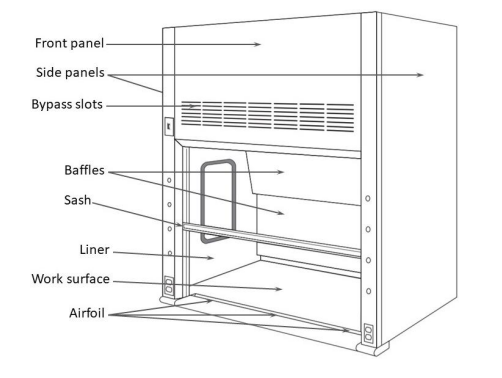For proper airflow in your chemical fume hood, avoid obstructing the air intake at the back baffles and ensure the interior panels are intact. Items required to be left inside the hood should be placed on a shelf or platform to allow airflow around the object(s). Paper towels or wipes used to clean the hood’s work surface should be removed to prevent debris from entering the fume hood’s exhaust system. Dust and oil residue from any equipment used inside the hood should be cleaned regularly to prevent intake blockage and protect fume hood ductwork.
Instructions for regular fume hood cleaning are described in Emory’s Chemical Hygiene Plan (CHP), Appendix C: Chemical Fume Hood Cleaning Procedures. It is particularly important to clean the hood’s exterior airflow bypass slots (if present), as well as in and around the fume hood’s airfoil which is located at the front of the work surface. The airfoil is essential for proper fume containment at the front of the work surface. Removing the airfoil will cause fumes to escape. Please see the video demonstrating airflow with and without an airfoil attached.
If your chemical fume hood requires professional cleaning, please contact one of Emory’s approved vendors for a quote (e.g., Safety Plus, ENV Services). If your chemical fume hood monitor alarm is sounding or you notice loss of airflow, contact your Research Building Liaison or EHSO’s main number, 404-727-5922.

